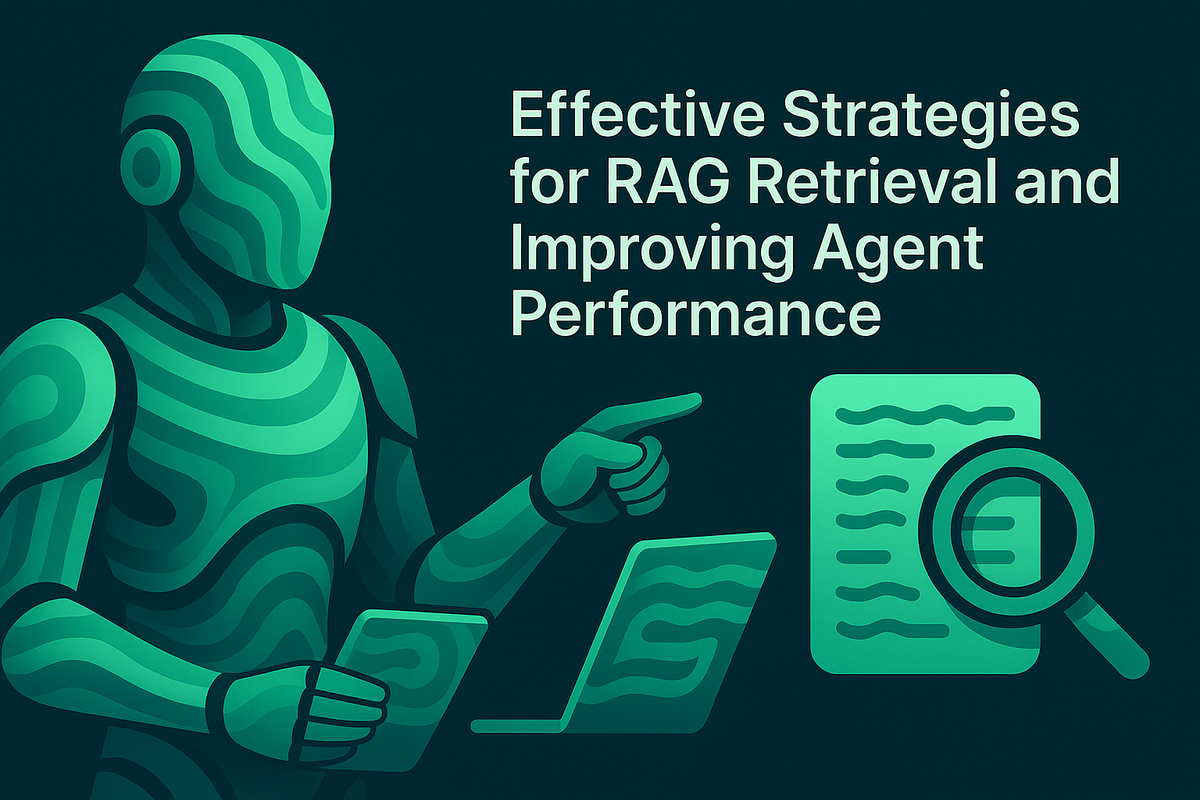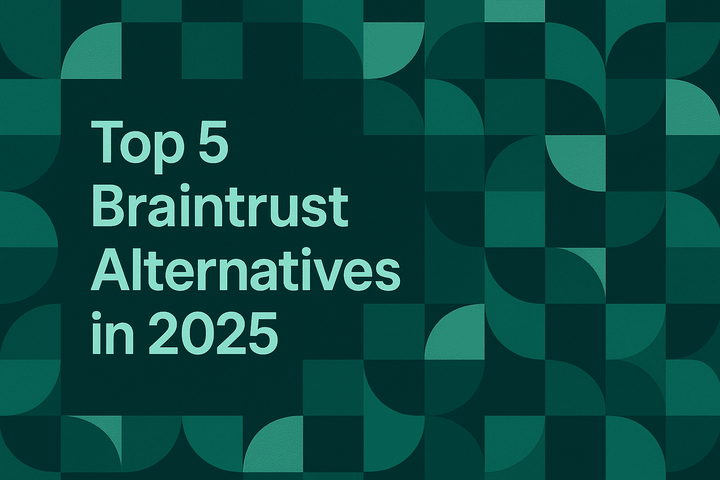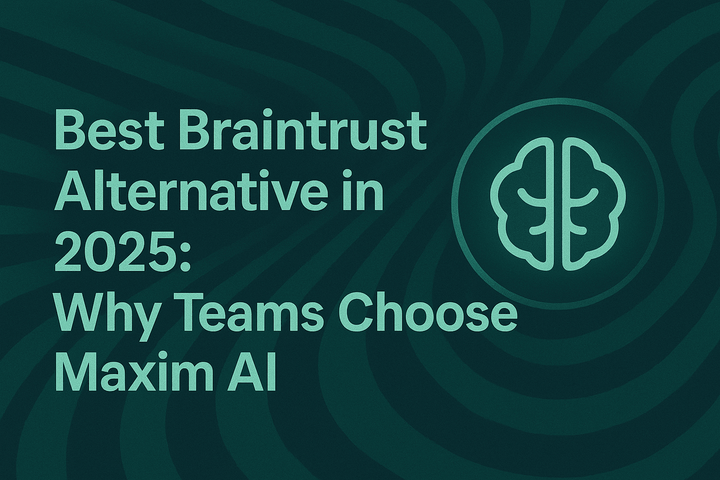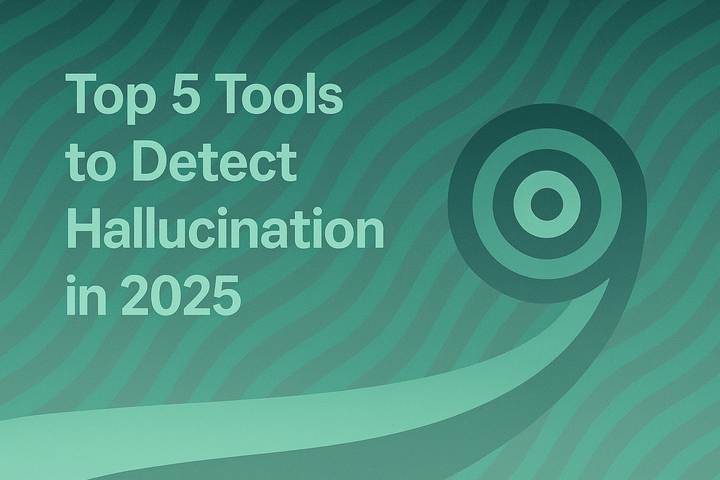Effective Strategies for RAG Retrieval and Improving Agent Performance

TL;DR
Retrieval-Augmented Generation (RAG) systems and AI agents face performance challenges that directly impact accuracy, latency, and user satisfaction. In 2025, organizations achieve 35-48% improvements in retrieval precision and up to 80% success rates in task completion by implementing advanced strategies including adaptive retrieval patterns, multimodal content integration, hybrid search methods, and comprehensive evaluation frameworks. This guide explores proven techniques such as query classification, hierarchical memory architectures, graph-based reasoning, and continuous monitoring through observability platforms that enable teams to optimize RAG retrieval mechanisms and enhance agent performance for production environments.
Understanding RAG Retrieval Fundamentals and Performance Bottlenecks
Retrieval-Augmented Generation has become essential as traditional language models, regardless of size, remain constrained by static training data and struggle to adapt to new information or context-specific queries. RAG systems augment models by retrieving relevant information needed to generate accurate responses, helping point models toward important data that wasn't included in original training datasets.
In 2025, RAG serves as a strategic imperative addressing core enterprise challenges by bridging the gap between large language models and organizational knowledge through real-time, curated, proprietary information retrieval. Unlike generative AI powered by pre-trained models that generate answers based on static training data, RAG grounds responses in current information, enabling enterprises to build systems that are compliant, secure, and scalable.
The primary bottlenecks in RAG systems include:
- Retrieval accuracy and relevance: Dense retrieval mechanisms must accurately identify relevant documents from extensive databases while maintaining computational efficiency and semantic understanding.
- Latency and response times: Major challenges include high computational costs, real-time latency constraints, data security risks, and the complexity of integrating multiple external data sources. Each processing stage introduces potential delays that compound throughout the workflow, impacting user experience.
- Integration complexity: The interface between retrieval and generation components requires careful orchestration. Researchers focus on improving this interface by enhancing models' capacity to selectively source and integrate relevant information from extensive databases while maintaining context preservation.
- Context management: Agents must handle both immediate context and historical information efficiently. Poor context management leads to slow responses and degraded user experiences, particularly in multi-turn conversations where maintaining coherence is critical.
Understanding these bottlenecks enables teams to implement targeted optimization strategies that address root causes. Maxim's observability platform provides comprehensive tracing capabilities to identify performance issues in production systems through distributed tracing, enabling teams to monitor latency, track retrieval quality, and debug complex agent behaviors.
Advanced RAG Retrieval Strategies for Enhanced Accuracy
Modern RAG systems require sophisticated retrieval mechanisms that go beyond simple vector similarity searches. RAG represents a major advancement by combining large language models with information retrieval systems to enhance factual grounding, accuracy, and contextual relevance.
Adaptive Retrieval Implementation
Systems in 2025 dynamically adjust retrieval strategies based on query intent and complexity, prioritizing relevant sources like peer-reviewed studies for medical queries over general web content, reducing irrelevant retrievals in benchmarks. Adaptive RAG intelligently decides when and how to retrieve external information, optimizing both efficiency and accuracy by using a specialized classifier to evaluate incoming queries and determine complexity levels.
Query complexity assessment involves:
- Simple queries: Direct answers using existing model knowledge without external retrieval
- Moderate complexity: Standard vector search with semantic matching
- Complex queries: Multi-step retrieval with reasoning chains and cross-referencing
This approach prevents unnecessary computational overhead for straightforward questions while ensuring complex, multi-step queries receive thorough retrieval processes. Organizations implementing adaptive retrieval report improved resource optimization and enhanced system performance.
Maxim's prompt management enables teams to configure retrieval strategies directly through the UI, allowing product teams to define query classification rules and retrieval thresholds without code changes.
Multimodal RAG Systems
Future advancements focus on multimodal integration where RAG systems expand capabilities to seamlessly process and generate responses across diverse media types such as text, images, audio, and video. Multimodal RAG integrates text, images, and video, enabling richer outputs like generating repair guides with diagrams from video tutorials.
Multimodal capabilities enable:
- Visual understanding: Processing images and diagrams for technical documentation and product manuals
- Audio integration: Transcribing and analyzing voice interactions for customer service optimization
- Cross-modal retrieval: Finding relevant information across different media types based on semantic similarity
This approach proves particularly valuable in educational contexts, healthcare applications with medical imaging, and technical support scenarios requiring visual demonstrations.
Self-Correcting RAG
Self-reflective systems critique their own retrievals using reflection tokens, reducing hallucinations by 52% in open-domain question-answering tasks. Corrective RAG systems trigger web searches to correct outdated retrievals, keeping financial or medical advice updated to the minute.
Self-correction mechanisms include:
- Relevance scoring: Evaluating retrieved documents for contextual alignment with queries
- Confidence thresholds: Triggering additional retrieval when initial results show low confidence
- Real-time validation: Cross-referencing information against current data sources for time-sensitive domains
Organizations deploying self-correcting RAG report substantial reductions in hallucinations and improved factual accuracy, particularly for domains requiring up-to-date information.
GraphRAG for Structured Knowledge
GraphRAG combines vector search with structured taxonomies and ontologies to bring context and logic into the retrieval process, using knowledge graphs to interpret relationships between terms and achieving up to 99% search precision. This approach represents a significant advancement over traditional vector-only retrieval.
Key advantages:
- Relationship mapping: Understanding connections between entities for contextually aware retrieval
- Hierarchical organization: Structuring knowledge with taxonomies for deterministic accuracy
- Reasoning capabilities: Enabling multi-hop reasoning across connected information nodes
A prerequisite for effective GraphRAG is a carefully curated taxonomy and ontology. Organizations must invest in knowledge graph construction and maintenance to realize the full benefits of this approach.
Optimizing Agent Performance Through Architecture and Memory Management
As AI agents become more sophisticated in 2025, they require more computational resources, memory, and data to function effectively, leading to development of new techniques like hierarchical memory architectures and retrieval-augmented generation. AI agents are expected to be involved in most business tasks within three years, with effective human-agent collaboration projected to increase human engagement in high-value tasks by 65%.
Reasoning and Planning Optimization
In 2025, two approaches have gained significant attention: tree-of-thought and graph-based reasoning for optimizing agent reasoning and planning capabilities. These techniques enable agents to handle complex, multi-step problems more effectively.
Tree-of-thought reasoning: Agents explore multiple reasoning paths simultaneously, evaluating alternative approaches before committing to a solution. This method proves particularly valuable for complex problem-solving where single-path reasoning might miss optimal solutions. The approach involves:
- Generating multiple candidate reasoning branches from initial prompts
- Evaluating each branch for logical consistency and relevance
- Pruning unproductive paths while expanding promising ones
- Selecting optimal solutions based on comprehensive evaluation
Graph-based reasoning: Represents problems and knowledge as interconnected nodes, enabling agents to navigate relationships and dependencies more naturally. This approach facilitates:
- Understanding causal relationships between concepts and actions
- Identifying dependencies that constrain solution spaces
- Leveraging structural knowledge for more informed decision-making
- Supporting multi-hop reasoning across knowledge graphs
Organizations implementing advanced reasoning techniques report 40-60% improvements in task completion rates for complex workflows.
Task Decomposition Strategies
Optimizing AI agent performance by creating workflows with separate tasks that take about 30 minutes for a human can increase success rates and boost efficiency with few to no corrections in agent output. Smart task decomposition enables strategic deployment to maximize exponential benefits of shorter tasks, allowing agents to maintain high accuracy levels while functioning within optimal performance zones.
Effective task decomposition involves:
- Complexity analysis: Assessing task requirements and identifying natural breakpoints
- Dependency mapping: Understanding relationships between subtasks and sequencing requirements
- Failure isolation: Designing workflows where subtask failures don't cascade throughout entire processes
- Checkpoint systems: Implementing state preservation for recovery and optimization
Key deployment strategies include hybrid workflows combining human oversight with AI for high-probability tasks, continuous monitoring systems equipped with tracing capabilities to identify performance issues, and multi-agent architectures featuring specialized agents for various task complexities.
Maxim's agent simulation capabilities enable teams to test task decomposition strategies across hundreds of scenarios before production deployment, identifying optimal breakpoints and failure modes.
Comprehensive Evaluation and Monitoring Frameworks
Evaluating RAG models effectively requires understanding the interaction between retrieval and generation components and optimizing them using the right set of metrics and evaluation techniques. To realize agentic AI's transformative potential, organizations must treat AI as a strategic asset whose effectiveness needs continuous measurement and improvement.
Core Evaluation Metrics
Retrieval-focused metrics:
By implementing best practices such as focusing on recall@k and precision@k, assessing contextual relevancy, fine-tuning embedding models, and using advanced indexing strategies, teams can significantly enhance performance of RAG pipelines.
- Precision@k: Measures proportion of relevant documents in top-k retrieved results, ensuring retrieved content aligns with query intent
- Recall@k: Evaluates coverage by assessing whether all relevant documents appear in retrieved set
- Contextual relevance: Assesses whether retrieved information directly addresses query requirements beyond surface-level matching
- Retrieval latency: Tracks time required for information retrieval, critical for real-time applications
Generation quality metrics:
- Faithfulness: Ensures generated responses accurately reflect retrieved information without introducing hallucinations
- Coherence: Evaluates logical flow and consistency in generated responses
- Conciseness: Measures whether responses provide necessary information without excessive verbosity
- Completeness: Assesses coverage of relevant aspects from retrieved context
Maxim's evaluator library provides comprehensive pre-built evaluators including faithfulness, context relevance, and task success metrics for RAG evaluation.
Agent-Specific Performance Indicators
Evaluation focuses on success rate, response time, and behavior consistency, with conducting pilot tests to find the agent's half-life where performance drops to 50%. KPIs should be specific enough that meanings are unambiguous, must be measurable using reliable data sources, and should be time-bound with defined periods for evaluation.
Operational metrics:
- Task completion rate: Percentage of successfully completed tasks without human intervention
- First-response accuracy: Measures correctness of initial agent responses before iterations
- Average handling time: Tracks efficiency in processing and responding to user requests
- Escalation rate: Monitors frequency of tasks requiring human handoff, indicating capability boundaries
Business impact metrics:
Productivity and efficiency gains include metrics like time to resolve IT issues, report generation time for decision-making, and average handling time for customer service interactions to demonstrate clear efficiency improvements. Business outcomes connect agent performance to bottom-line results, including cost per interaction in support, time to market in software development, or unplanned downtime reduction in operations.
Organizations must establish baselines before implementing optimizations to measure incremental improvements accurately. Establishing benchmarks by capturing performance levels before implementing new AI agents provides a starting point for comparison.
Continuous Monitoring and Iteration
Continuous monitoring systems equipped with tracing capabilities identify performance issues and adapt strategies in real-time. Driving continuous improvement relies heavily on experimentation and human-in-the-loop approaches, where A/B testing allows controlled comparisons and human reviewers correct AI errors.
Monitoring strategies:
- Real-time dashboards: Maxim's dashboard provides visibility into agent behavior, latency distributions, and quality metrics across production deployments
- Anomaly detection: Automated systems identify performance degradation, unusual patterns, or quality regressions
- User feedback integration: Collecting user feedback enables human-in-the-loop evaluation for subjective quality assessment
- Alert mechanisms: Setting up alerts ensures teams respond promptly to production issues
Iterative improvement cycles:
- Dataset curation: Building datasets from production logs for targeted evaluation and fine-tuning
- A/B testing: Comparing retrieval strategies, prompt variations, and model configurations systematically
- Human annotation: Setting up human annotation for subjective quality assessments and edge case analysis
- Automated evaluation: Configuring auto-evaluation on production logs for continuous quality monitoring
Performance optimization should prioritize cost-efficiency metrics such as API costs, token usage, and inference speeds, with frameworks like DSPy helping optimize few-shot examples while keeping costs minimal.
Security, Governance, and Cost Optimization
When workflows require strict regulatory compliance, integrating real-time operational data, or retrieving data with deterministic accuracy, advanced RAG systems in 2025 address these limitations through various innovations. Security and governance considerations become paramount as agents handle sensitive enterprise data.
Enterprise Security Requirements
Organizations deploying production RAG systems must address:
Data protection: Implementing access controls, encryption, and data sovereignty measures ensures sensitive information remains secure throughout retrieval and generation processes. Organizations must consider:
- Role-based access control for knowledge bases limiting retrieval based on user permissions
- Encryption at rest and in transit for all stored and transmitted data
- Data residency requirements for compliance with regional regulations
- Audit logging for all retrieval and generation activities
Prompt injection defense: Adversarial inputs attempting to manipulate agent behavior require robust safeguards including input validation, output filtering, and monitoring for suspicious patterns.
PII detection: Maxim's PII detection evaluator identifies personal information in generated outputs, enabling automated redaction and compliance monitoring.
LLM-Agnostic Architecture
The most future-proof RAG systems are LLM-agnostic by design, allowing seamless integration with various large language models and providing essential strategic agility and cost control. This flexibility prevents vendor lock-in and enables organizations to:
- Select optimal models for specific use cases based on performance requirements and cost constraints
- Swap models as the landscape evolves without re-architecting entire systems
- Leverage multiple models for different components of agent workflows
- Optimize costs by routing queries to appropriate models based on complexity
Bifrost, Maxim's AI gateway, provides unified access to 12+ providers including OpenAI, Anthropic, AWS Bedrock, and Google Vertex through a single OpenAI-compatible API. Key features include automatic fallbacks between providers, semantic caching to reduce costs and latency, and budget management for hierarchical cost control.
Cost Optimization Strategies
Organizations must balance performance with economic efficiency. Effective cost management involves:
Caching strategies: Implementing semantic caching reduces redundant API calls for similar queries. Bifrost's semantic caching analyzes query similarity and returns cached responses when appropriate, achieving 40-60% cost reductions for applications with repeated query patterns.
Model routing: Directing queries to appropriate models based on complexity ensures cost-effective processing. Simple queries route to faster, less expensive models while complex reasoning tasks leverage more capable options.
Token optimization: Minimizing prompt lengths, optimizing context window usage, and implementing efficient chunking strategies reduce per-request costs without sacrificing quality.
Load balancing: Distributing requests across multiple API keys and providers prevents rate limiting and ensures consistent performance during peak usage.
Conclusion
Optimizing RAG retrieval and agent performance in 2025 requires comprehensive strategies spanning architecture design, memory management, evaluation frameworks, and continuous monitoring. Organizations successfully implementing these approaches report significant improvements: 35-48% gains in retrieval precision, 40-60% enhancements in operational efficiency, and up to 80% task completion rates.
The evolution from traditional single-query RAG to adaptive, multimodal, self-correcting systems represents a fundamental shift in how enterprises leverage AI. Success depends on treating AI agents as strategic assets requiring continuous measurement, optimization, and governance rather than set-and-forget deployments.
Maxim AI provides an end-to-end platform for AI simulation, evaluation, and observability, helping teams ship agents reliably and more than 5x faster. From advanced prompt engineering and comprehensive agent simulation to production observability and gateway infrastructure, Maxim empowers AI engineering and product teams to build, test, and optimize high-performing agents at scale.
Ready to optimize your RAG systems and improve agent performance? Get started with Maxim or book a demo to see how leading organizations are achieving measurable improvements in AI quality and reliability.


